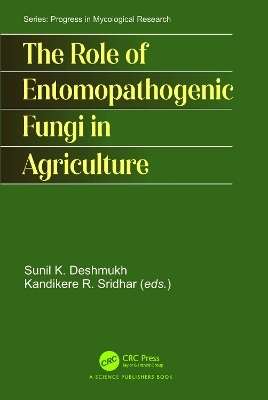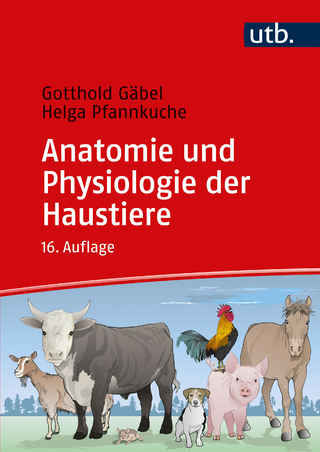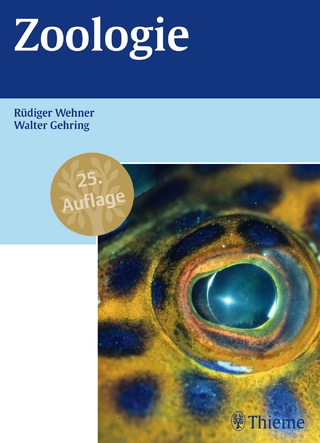
The Role of Entomopathogenic Fungi in Agriculture
CRC Press (Verlag)
978-1-032-81322-6 (ISBN)
- Lieferbar (Termin unbekannt)
- Versandkostenfrei innerhalb Deutschlands
- Auch auf Rechnung
- Verfügbarkeit in der Filiale vor Ort prüfen
- Artikel merken
Entomopathogenic fungi are economically important fungi from environmental, agricultural, and human health perspectives. They are an alternative to chemical pesticides. They can also be used as biostimulants and biological control agents for mosquitoes and other insects. These fungi are also known to produce a variety of metabolites of industrial significance. They face challenges in the cultivation, fermentation, and purification of products. Their habitats and ecological niches are of special significance for ex situ conservation and the large scale of production of spores.
This book reviews molecular aspects of the pathogenesis of entomopathogenic fungi, the development of mycoinsecticides, and its regulatory aspects. It addresses different aspects of entomopathogenic fungi, including host-pathogen interactions (susceptibility and resistance), fungus-insect and fungus-fungus dual interactions, phylogeny and taxonomy, biochemistry, and molecular basis of enteropathogenesis, market potential of entomopathogens, regulatory aspects, bioprospecting of fungi, fungi as crop bodyguards and in disease suppression, and consortia for the control of insect pests and pathogens in single crop systems.
Sunil K. Deshmukh is a Scientific Advisor to Greenvention Biotech, Uruli-Kanchan, Pune, India, and Agpharm Bioinnovations LLP, Patiala, Punjab, India. Veteran industrial mycologist spent a substantial part of his career in drug discovery at Hoechst Marion Roussel Limited [now Sanofi India Ltd.], Mumbai, and Piramal Enterprises Limited, Mumbai. He has also served as an Adjunct Associate Professor at Deakin University, Australia. Kandikere R. Sridhar is an adjunct faculty member at Mangalore University, India. His primary area of study is aquatic fungi in freshwater and marine waters. He has research collaborations in the USA, Canada, Germany, Switzerland, and Portugal. He was president of the Mycological Society of India (2018), a distinguished Asian mycologist (2015), and one of the world's top 2% scientists in the field of mycology (2019–21).
Preface. SCIENCE, HISTORY AND EXPLORATION. The Science Behind Entomopathogenic Fungi: Mechanisms and Applications. Historical Perspectives on Biopesticides. Exploration of Entomopathogenic Fungi in the Western Ghats. INTEGRATED PEST MANAGEMENT. Integrated Pest Management by Biological Control. Biocontrol of Insect Pests by Natural Enemies. BIOCONTROL OF INSECT PESTS. Entomopathogenic Fungi: Bioweapons Against Insect Pests. Specificity and Biocontrol Potential of Entomopathogenic Fungi. Entomopathogenic Perspectives of Nomuraea rileyi. Potential of Trichoderma in Combating Insect Pests. Entomopathogenic Fungi for the Control of Aedes Mosquitoes. Entomopathogenic Fungi and Groundnut Pests: Applications, Challenges and Prospects. ROLE OF SECONDARY METABOLITES. Metabolic Profile of the Entomopathogenic Fungi. Pest Control Strategies using Secondary Metabolites of Entomopathogenic Fungi. CULTURING ENTOMOPATHOGENS. Mass Production of Beauveria bassiana. Solid-State Culture Spore Production of Entomopathogenic Fungi.
| Erscheinungsdatum | 05.12.2024 |
|---|---|
| Reihe/Serie | Progress in Mycological Research |
| Zusatzinfo | 11 Illustrations, color; 14 Illustrations, black and white |
| Verlagsort | London |
| Sprache | englisch |
| Maße | 156 x 234 mm |
| Themenwelt | Naturwissenschaften ► Biologie ► Zoologie |
| Technik ► Umwelttechnik / Biotechnologie | |
| Weitere Fachgebiete ► Land- / Forstwirtschaft / Fischerei | |
| ISBN-10 | 1-032-81322-9 / 1032813229 |
| ISBN-13 | 978-1-032-81322-6 / 9781032813226 |
| Zustand | Neuware |
| Informationen gemäß Produktsicherheitsverordnung (GPSR) | |
| Haben Sie eine Frage zum Produkt? |
aus dem Bereich


